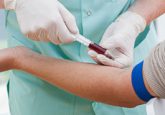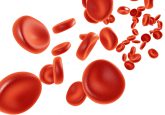Novel automated breath analysis device

Technique developed for direct alveolar sampling at the point-of-care.
Researchers at the University of Rostock (Rostock, Germany) have reported a novel automated needle trap microextraction technique for breath analysis. Compared to traditional techniques used in breath analysis, such as solid-phase extraction and solid-phase microextraction, needle trap devices (NTDs) have demonstrated improved stability, detection limits, reproducibility and reduced sampling time and volume.
NTDs were used to investigate sampling flow between 2 and 30 ml/min and volume between 10 and 100 ml in both humid breath samples and dry gas standards containing a mixture of hydrocarbons, aldehydes and aromatic compounds. Single-bed (polymer packing) and triple-bed NTDs (combination of divinylbenzene, Carbopack X and Carboxen 1000) were utilized. Substances desorbed from the NTDs by thermal expansion were subsequently analyzed by GC–MS.
In addition, an automated CO2-controlled sampling device designed for point-of-care, direct alveolar sampling was developed and tested by Wolfram Miekisch and his colleagues. This device can control variables such as sampling flow and volume, which the team found to be crucial when applying NTDs in vivo. The automated sampling produced comparable or improved results when compared with manual sampling. Analysis of automated pre-concentrated alveolar breath by triple-bed NTDs demonstrated a linear increase of substance amounts with increasing sample volume.
This automated point-of-care technology has the advantage that it can be used for direct alveolar sampling without additional sampling, storage or pre-concentration steps.
Source: Trefz P, Rösner L, Hein D, Schubert JK, Miekisch W. Evaluation of needle trap micro-extraction and automatic alveolar sampling for point-of-care breath analysis. Anal. Bioanal. Chem. doi:10.1007/s00216-013-6781-9 (2013) (Epub ahead of print).





